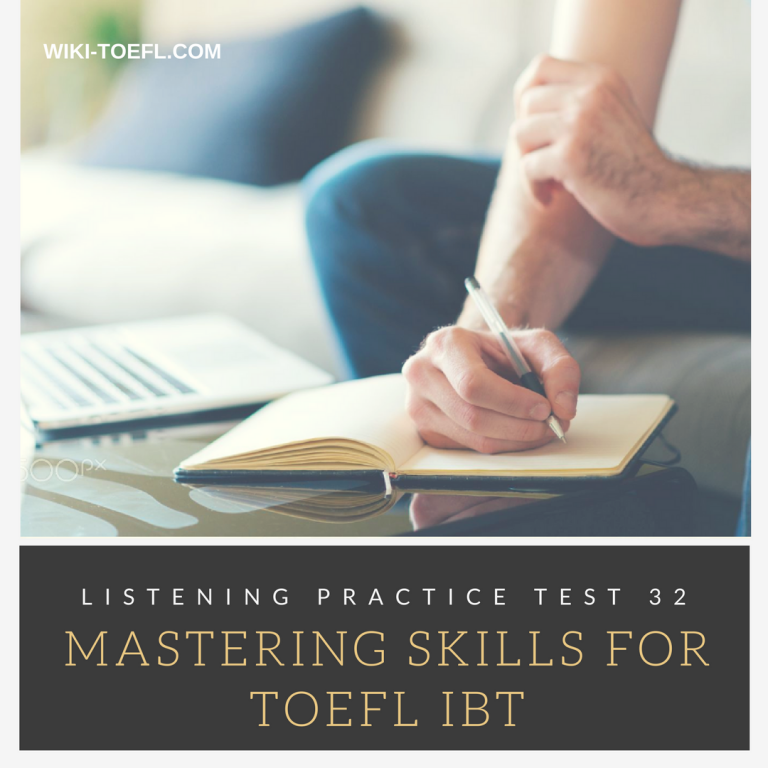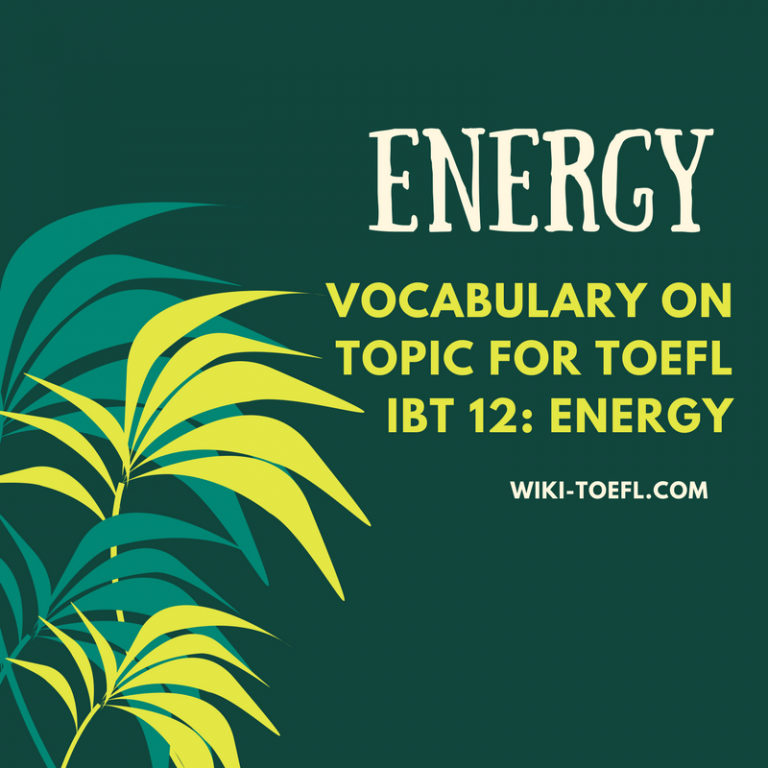TOEFL IBT PRACTISE TEST 33 FROM MASTERING SKILLS FOR TOEFL IBT
*Note: Comment below if you need the answer key from us. If you have any concerns, please comment below!
TASK I
Directions: Listen to Track 86.
Directions: Now answer the questions.
1.What are the speakers mainly discussing?
- Getting financial aid for college
- Planning a student’s course schedule for the next four years
- Taking courses during the summer session
- Differences in admissions requirements between Hooper University and two other schools
2.Why does the student want to take classes at City College?
- Because Hooper University does not offer the classes he wants
- Because City College classes cost less money than ones at Hooper University
- So that he can take classes on the weekend
- So that he can graduate from Hooper University early
3. Why will the man probably take only two courses?
- Students are limited to two summer courses.
- He can attend classes only on Saturday and Sunday.
- His financial aid will pay for only two courses.
- His summer job will keep him from taking more than two courses.
4. What will Ms. Brinker probably do for the man? Choose 2 answers.
- Give the man a student ID number
- Give the man a financial aid form
- Help the man figure out which classes to take .
- Help the man apply to Hooper University
- Put the man’s information into the City College admission system
5.Listen to Track 87.
- The man waited too long to apply to City College
- The man should not attend Hooper University.
- The man will be able to do what he wants to do.
- The man is very unlucky.
World History
Directions: Now answer the questions.
6.What is the main purpose of the lecture?
- To compare the study of world history to the study of United States history
- To explain to the students their next assignment
- To explain different approaches to the study of world history
- To explain the origins of history as an academic discipline
7.Why does the professor mention the Western-Heritage Model used in her high school? y
- To explain why she prefers using the model
- To emphasize that the model was widely used in the past
- To correct an error in a student’s description of the model
- To compare high school history courses to college history courses
8.According to the professor, what is an advantage of the Different-Cultures Model?
- It focuses on the history of the United States.
- It is based upon the most widely researched theories.
- It includes the history of a variety of cultural groups.
- It makes thematic connections across different cultural groups.
9. What aspect of Islamic civilization will the professor likely discuss in the course?
- A succession of Islamic rulers
- The ancient origins of Islamic architecture
- The isolation of European cultures from Islamic influence
- Islamic elements in African cultures
10.Match each of the topics below with the type of world history course in which it would most likely be discussed.
Write your answer choices in the spaces where they belong
|
Answer Choices
- The contributions of Native American art to United States culture
- The independent discovery of printing techniques in Asia and Europe
- Ancient Roman foundations of the United States legal system
11. Listen to Track 89.
- She doubts that the course will fulfill the students’ expectations.
- She hopes that the students selected the course because of their interest.
- She is pleased that the course will fulfill the requirements.
- She is worried that the students might not be familiar with the course requirements.
Environmental Science
Directions: Now answer the questions.
12.What does the professor mainly discuss? .
- A common weather pattern in the southern Great Plains region
- Factors that created an ecological and human disaster
- Farming techniques introduced during the Dust Bowl era
- The erosion of grasslands by excessive rainfall
13. What happened during the agricultural expansion in the southern Great Plains?
- People improved the soil by planting wheat.
- Raising cattle and other livestock became less common.
- Most of the landowners became farmers.
- Much of the grassland was destroyed.
14.What point does the professor make when he mentions that good topsoil takes thousands of years to form?
- It takes a long time to ruin good topsoil.
- It was wrong to believe that land could not be damaged.
- Farmers should not have moved on to other places.
- Plowing the land creates good topsoil faster than natural processes do.
15.Why does the professor mention that drought is often blamed as the cause of the Dust Bowl?
- To explain that many tenant farmers had to leave their land before the Dust Bowl era
- To emphasize that the Dust Bowl resulted mainly from soil erosion
- To show why the local population increased when rainfall returned to normal
- To prove that the drought was the worst on record at that time
16.According to the professor, what did the Soil Erosion Act do to improve soil conservation? Choose 2 answers.
- It provided special equipment for farmers.
- It encouraged farmers to use better farming techniques.
- It turned damaged farmland into permanent grassland.
- It increased the variety of crops grown on each farm. .
17.Listen to Track 91.
- To ask the students for their opinions
- To express uncertainty about a historical situation
- To emphasize a point he has just made
- To correct an earlier statement
Directions: Now answer the questions.
18.Why does the man go to see the woman?
- To ask her to talk to his professor about an exam
- To get help completing an assignment
- To get help understanding why he is having trouble in his classes
- To ask her opinion about which class he should take
19.What does the man imply about his Spanish class?
- He helps other students in the class.
- He is doing well in the class.
- He cannot complete all the assignments.
- He needs to study more for the class.
20. What problem does the man have with his reading assignments? ‘
- He is not interested in what he reads.
- He cannot memorize definitions of terms.
- He is overwhelmed by the amount he has to read.
- He has difficulty identifying what is important information.
21. Why does the woman tell the man about her own experience as a student?
- To make him aware that other students have similar problems
- To encourage him to spend more time studying at the library
- To explain the importance of remembering details
- To convince him to take a study-skills course
22.What recommendations does the woman make about what the man should do? Choose 2 answers.
- Underline definitions in the text as he reads
- Write a summary of what he reads
- Read the text twice
- Find additional texts on his own
Astronomy
23.What is the lecture mainly about?
- How astronomers found the correct interpretation for a certain observation
- How astronomers distinguish between two kinds of nebulae
- Various improvements to the telescope over the last 300 years
- An old problem in astronomy that remains unsolved
24.According to the lecture, how did distant galaxies appear to eighteenth-century astronomers?
- Like the moons of planets
- Like small clouds
- Like variable stars
- Like bright points of light
25.What could astronomers better estimate once they knew what nebulae really were?
- The diameter of variable stars
- The density of cosmic dust
- The size of the universe
- The average number of planets in a galaxy
26.According to the professor, what did a 1920s telescope allow astronomers to do for the first time?
- Study the moons of Jupiter
- Observe gamma-ray bursters
- Reject the dust theory of nebulae
- Prove that galaxies are surprisingly small .
27.What did eighteenth-century astronomers have in common with astronomers today?
- They could not explain everything they detected with their instruments.
- They knew the correct distances of objects they could not identify.
- Their instruments were not powerful enough to detect spiral nebulae.
- They argued over the natural brightness of variable stars.
28. Listen to Track 94.
- She is certain about the correct answer.
- She is now aware that her original idea had a weakness.
- She is not convinced that the professor is right.
- She thinks that the professor misunderstood what she said earlier.
Art History
Directions: Now answer the questions.
29.What is the lecture mainly about?
- Various painting techniques
- Ways to determine the purpose of a piece of art
- How moral values are reflected in art
- How to evaluate a piece of art
30. According to the professor, what did ancient Greek philosophers value in a work of art?
- An accurate imitation of life
- An unusual perspective on life
- The expression of complex emotions
- The use of symbolism
31. Why does the professor talk about personal taste?
- To point out its importance in the evaluation of art
- To help students understand the meaning of aesthetics
- To show that personal taste and aesthetics are the same
- To help explain art from different cultures
32.Why does the professor mention wheels and spheres?
- To illustrate how movement can be expressed in a piece of art
- To demonstrate that objects are more important than colors in a piece of art
- To give an example of objects that have symbolic significance
- To explain why some objects rarely appear in works of art
33. The professor mentions 4 formal steps used in examining a piece of art. Place the steps in order from first to last.
Write your answer choices in the space where they belong. You can either write the letter of your answer choice or you can copy the sentence.
| 1 | |
| 2 | |
| 3 | |
| 4 |





